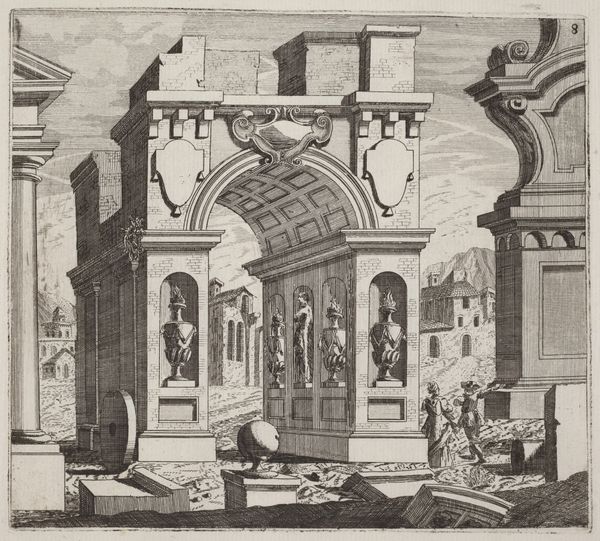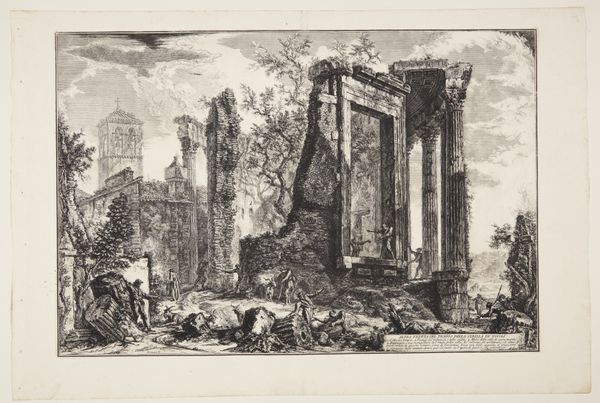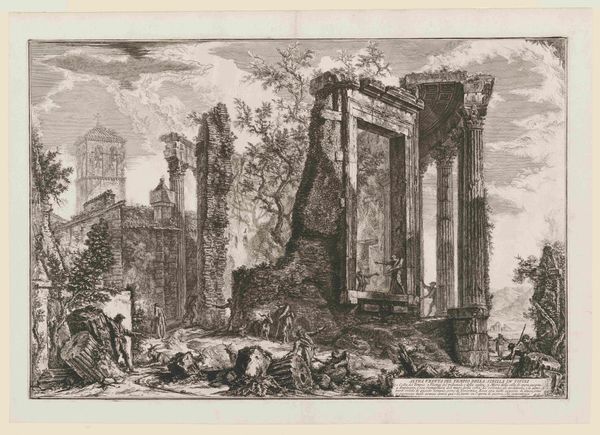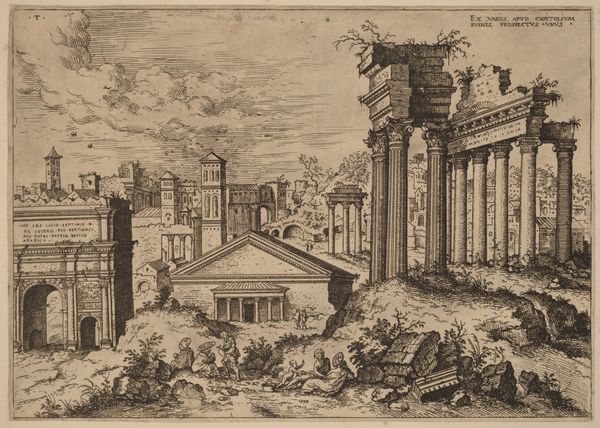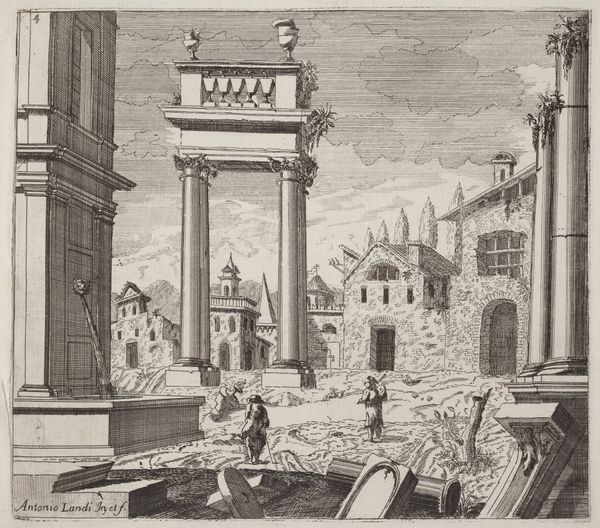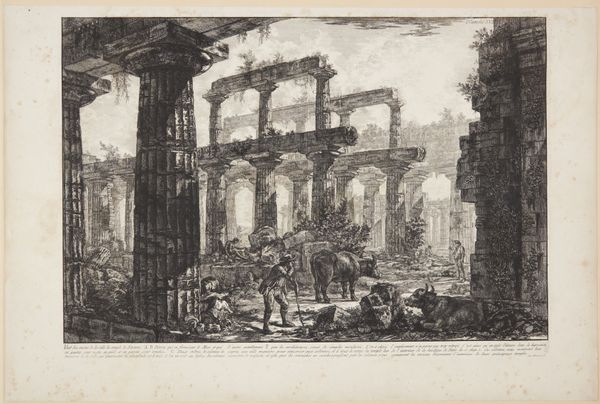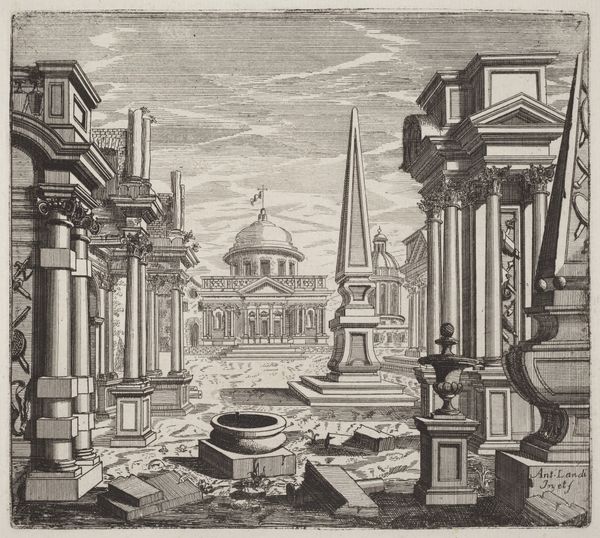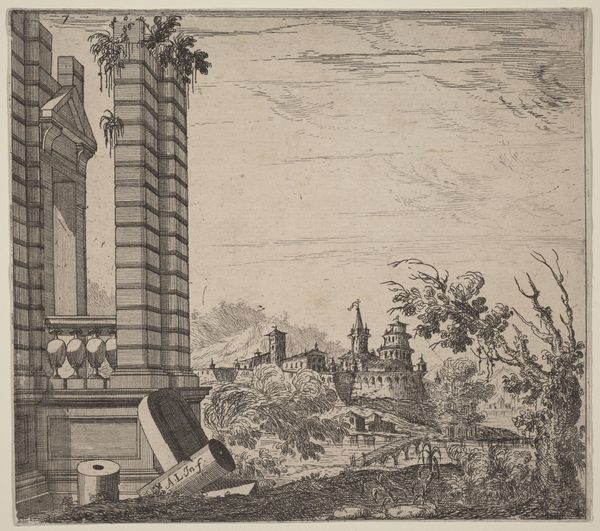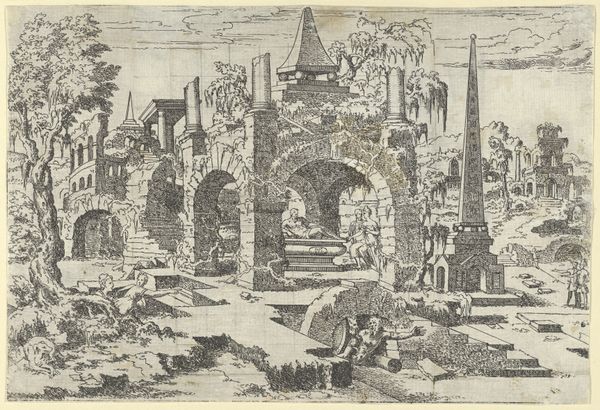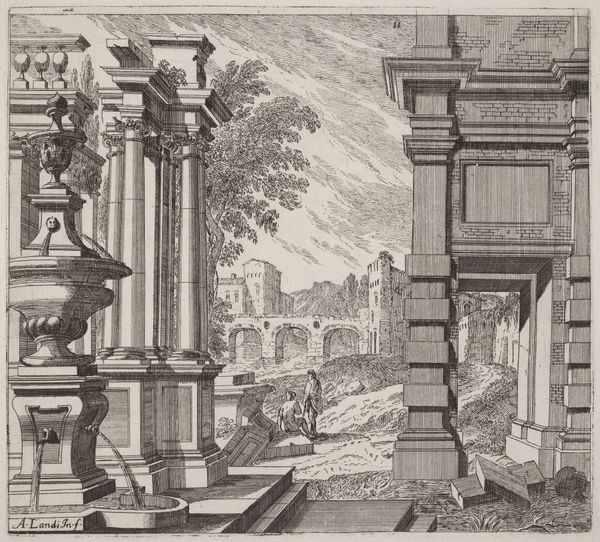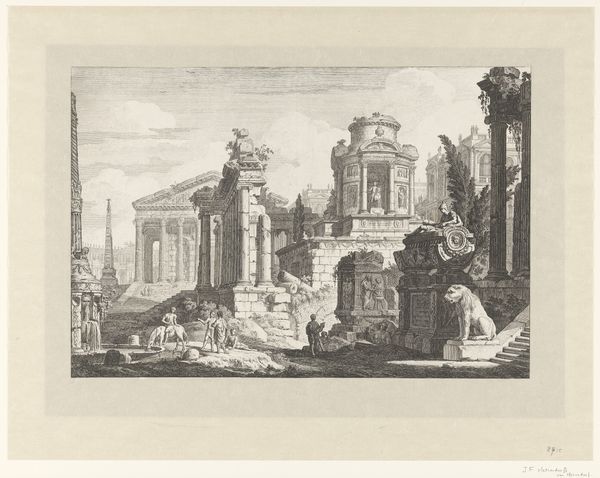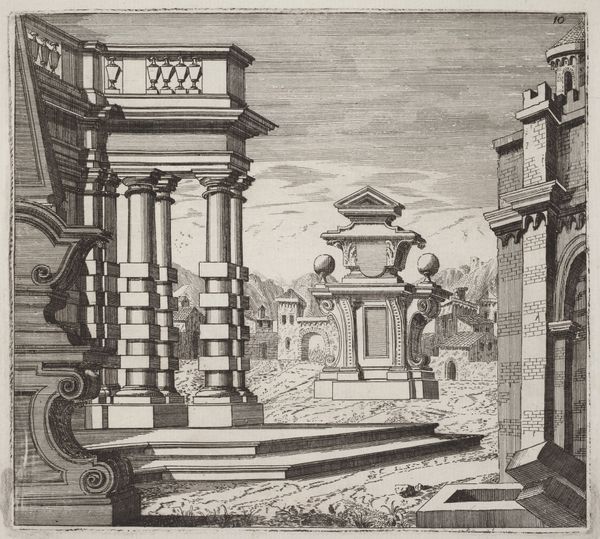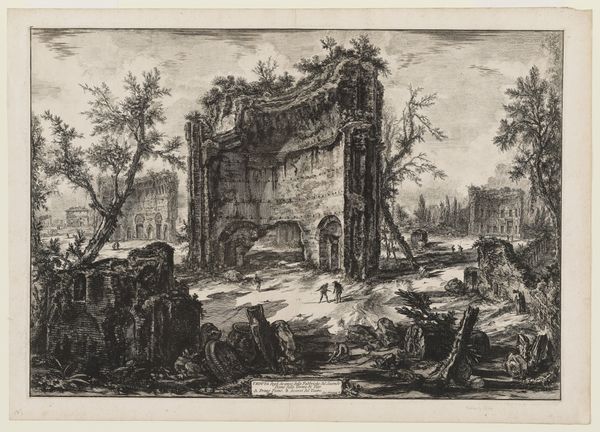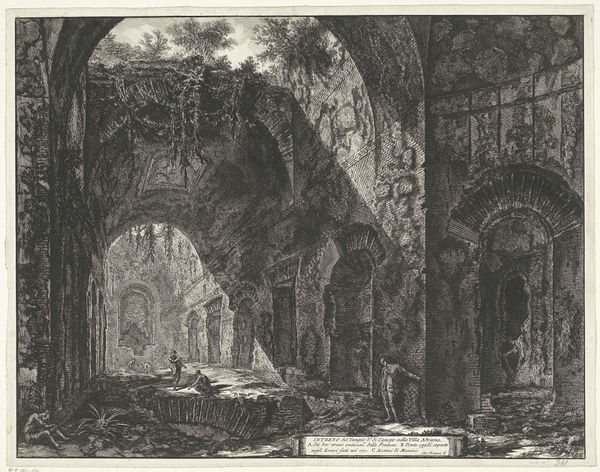
#
amateur sketch
#
light pencil work
#
mechanical pen drawing
# print
#
pencil sketch
#
old engraving style
#
charcoal drawing
#
charcoal art
#
sketchwork
#
pen-ink sketch
#
pencil art
Dimensions: plate: 16.4 x 18.2 cm (6 7/16 x 7 3/16 in.) sheet: 24.1 x 34 cm (9 1/2 x 13 3/8 in.)
Copyright: National Gallery of Art: CC0 1.0
Editor: So, this print, "Fantastic Townscape with Ruins" by Giuseppe Antonio Landi, was made before 1753. It's incredibly detailed, almost dreamlike with all these crumbling structures. It feels like a commentary on the impermanence of things, you know? What do you see in this piece? Curator: It's interesting you pick up on impermanence. These "fantastic townscapes," especially popular in the 18th century, reflect a real fascination—even an anxiety—around the cyclical nature of power and civilization. These ruins aren't just pretty backdrops. They served as potent symbols. Editor: Symbols of what exactly? The fall of Rome? Curator: Potentially. Think more broadly. The ruins invite viewers to contemplate the rise and fall of empires and question contemporary society's trajectory. These images gain popularity with increased colonial activity across the globe. How might such an image function ideologically at that moment? Editor: That's fascinating! So, it’s not just a beautiful scene, but also a prompt for political and social reflection. Colonial powers displaying scenes of destruction… to reflect on its own impact and impermanence? Or maybe the futility of rebellion against it? Curator: Precisely! And consider how the artist chooses to depict them. Are they romanticized? Glorified? Or is there a sense of loss and decay? Landi's composition is meticulously constructed, guiding the viewer's eye to create a specific narrative and ideological reading of these "ruins." Editor: This makes me see it completely differently. I initially saw just decay, but now I see an intentional narrative about power dynamics. It's pretty incredible how much history can be embedded in an image like this. Curator: Exactly! These townscapes were made to do far more than beautify a wall. The politics of imagery, the power that art possesses! They remind us that the art and the institutions showing the art—they always leave their traces.
Comments
No comments
Be the first to comment and join the conversation on the ultimate creative platform.
